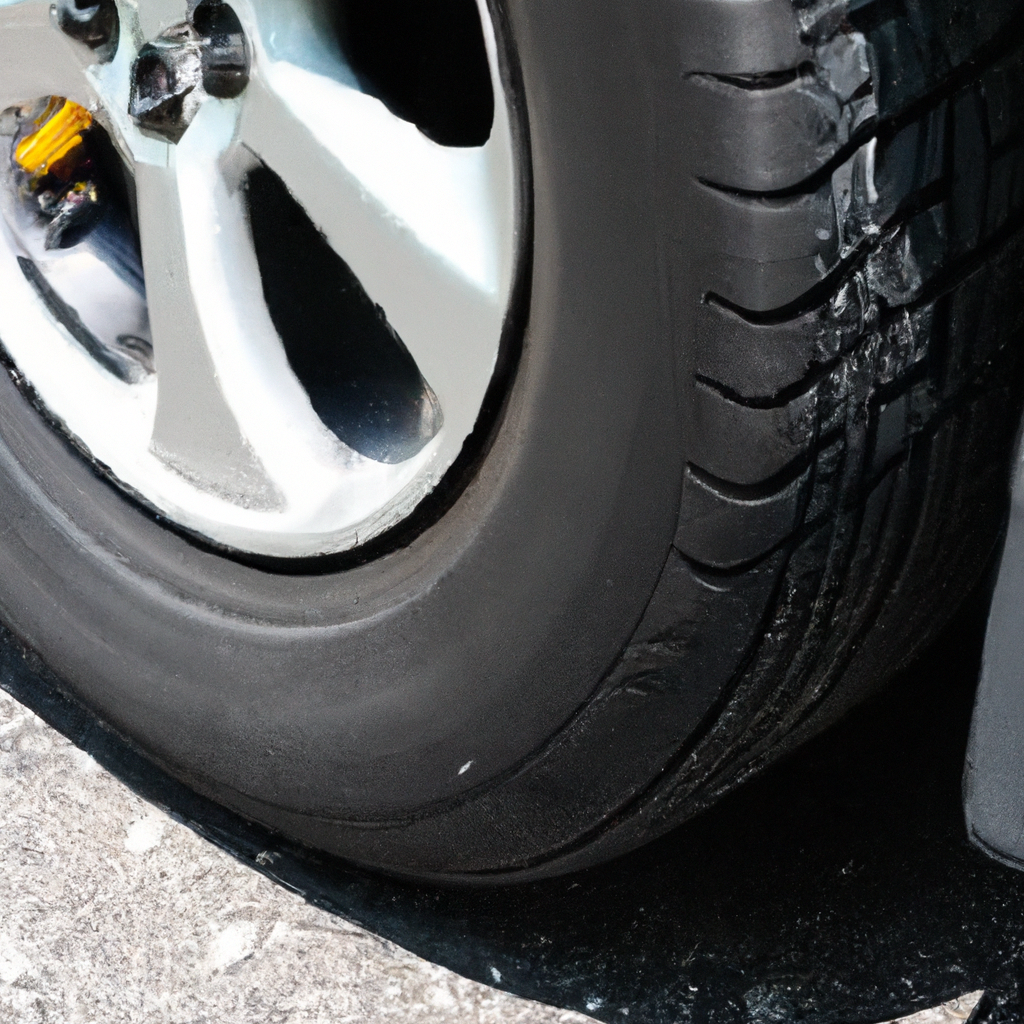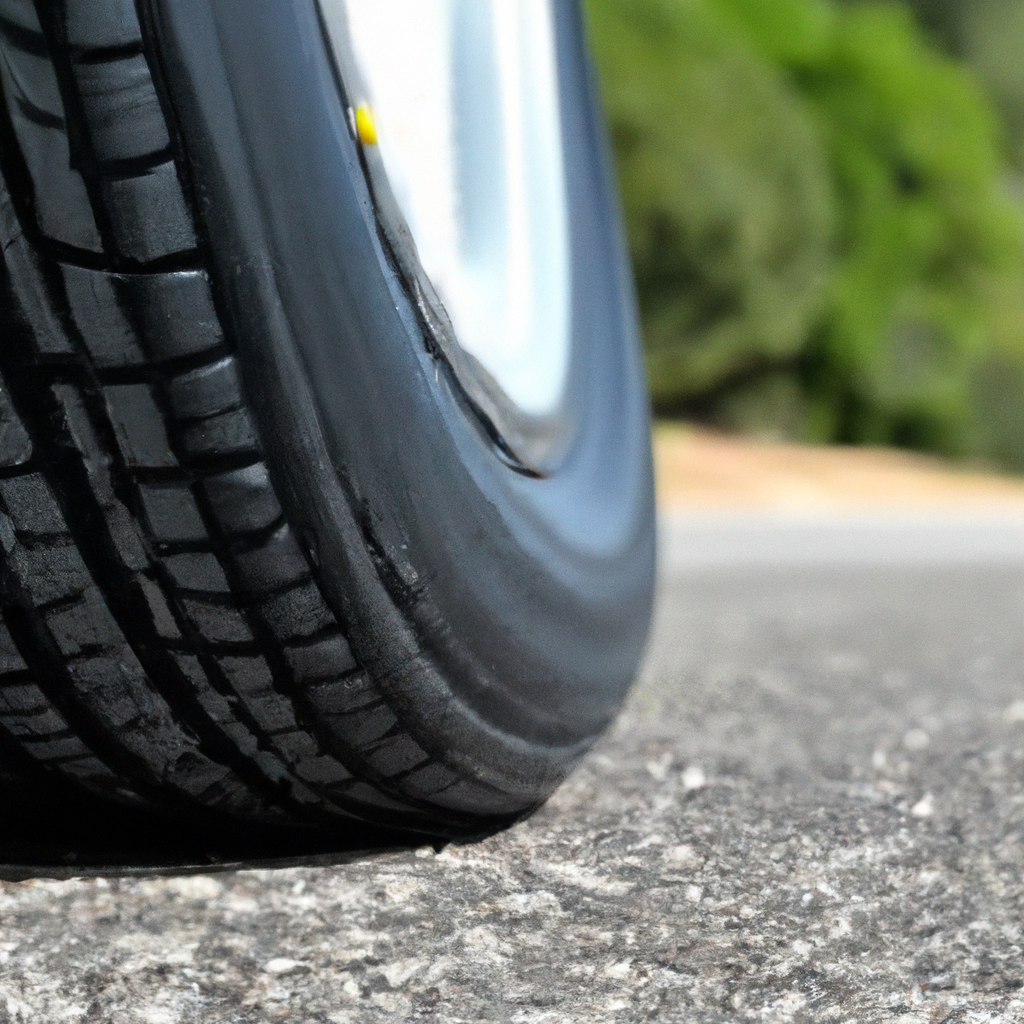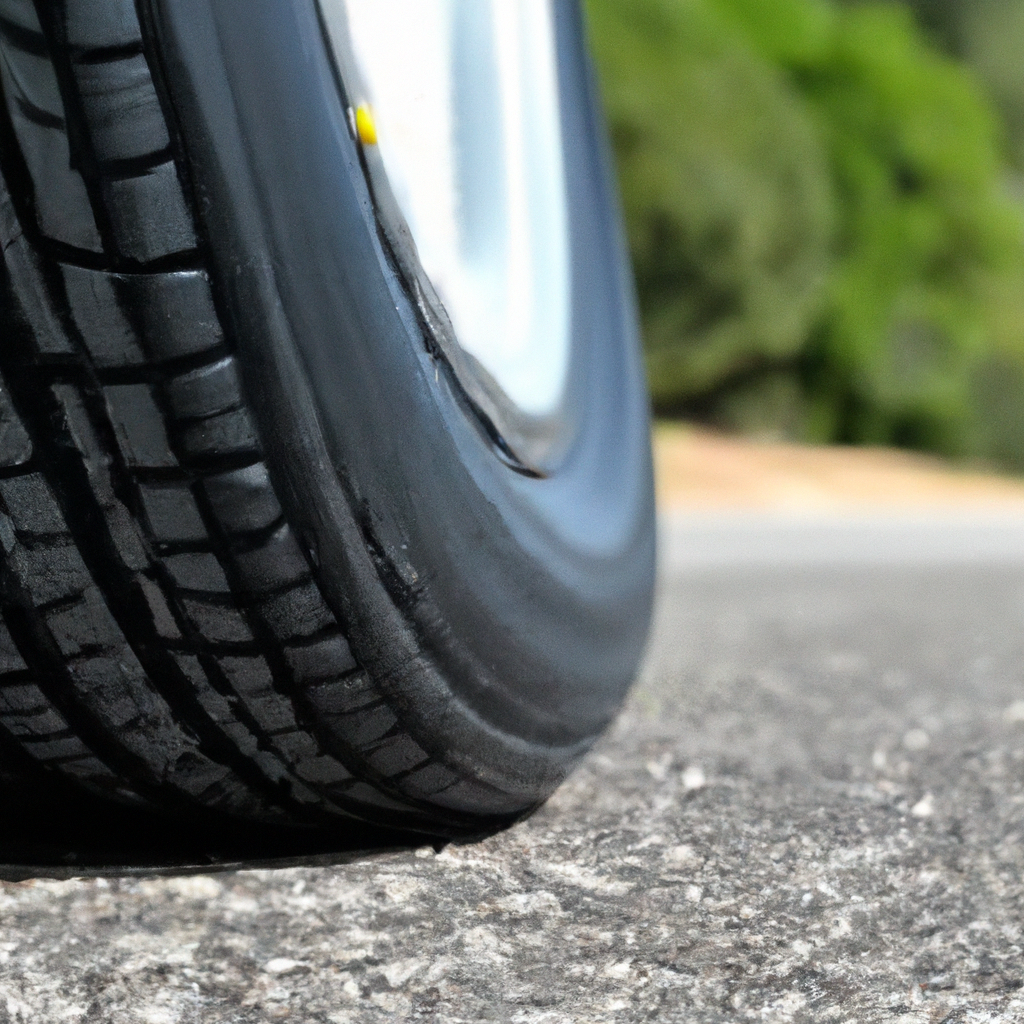You’re cruising down the open road on a sunny summer day, wind in your hair and the sun on your face. But as you glance down at your trusty summer tires, a question nags at you. What are the recommended driving speeds when using these tires? Fear not, because in this article we will explore the optimal speeds to ensure a smooth and safe journey with your summer tires. Whether you’re heading to the beach or embarking on a weekend getaway, understanding the right speeds for your summer tires will provide you with the confidence and peace of mind you need on the road. So sit back, relax, and let us guide you through the world of summer tire speeds!
Factors to Consider with Summer Tires
Tire Type and Wider Tires
When it comes to summer tires, there are various types to choose from, such as performance summer tires or touring summer tires. Each type has its own specific characteristics and is designed to meet different driving needs. Additionally, wider tires can offer enhanced traction and stability, especially during high-speed driving. However, it’s important to ensure that the wider tires you choose are compatible with your vehicle’s specifications and that you consider any potential handling or clearance issues.
Tire Tread and Depth
The tread pattern and depth of your summer tires play a crucial role in maintaining traction on dry roads. Summer tires generally have a shallower tread depth compared to all-season or winter tires, which allows for increased contact with the road. An adequate tread depth helps to reduce the risk of hydroplaning and improve overall handling performance. Regularly inspecting the tread depth and considering the conditions you’ll be driving in can help you determine if it’s time for a tire replacement.
Tire Pressure
Proper tire pressure is not only essential for your safety but also for the performance of your summer tires. Maintaining the recommended tire pressure levels specified by the vehicle manufacturer ensures that your tires function optimally and provide the necessary grip on the road. Underinflated tires can result in decreased fuel efficiency, increased tire wear, and compromised handling, while overinflated tires can lead to reduced traction and a harsher ride. Regularly check your tire pressure and adjust it as needed to ensure a smooth and safe summer driving experience.
Road Conditions and Temperature
The condition of the road and the temperature outside can significantly impact the performance of your summer tires. Dry and hot conditions are ideal for summer tires, as their rubber compound is designed to provide excellent grip in warmer temperatures. However, it’s important to consider other road conditions as well. Wet and rainy conditions can reduce traction, increasing the risk of hydroplaning. Furthermore, road construction, uneven surfaces, and extreme heat or cold can also affect how your summer tires perform. Adjust your driving speed accordingly based on the prevailing road and weather conditions to ensure optimal safety.
Speed Ratings and Recommendations
Understanding Speed Ratings
Speed ratings indicate the maximum speed at which a tire is designed to safely operate. They are represented by a letter code, with higher letters corresponding to higher speed ratings. It’s important to choose summer tires with an appropriate speed rating based on your vehicle’s capabilities and intended driving conditions. The speed rating serves as a guide to help you determine the maximum safe speed at which you should drive with your summer tires.
Recommended Speed Limits for Summer Tires
While speed limits may vary depending on local regulations and road conditions, there are general recommendations for driving speeds with summer tires. It’s crucial to adhere to these recommendations to ensure your safety and maximize the performance of your tires.
For most passenger cars equipped with summer tires, a conservative speed limit of around 75-80 mph (120-130 km/h) is recommended. This speed range allows for optimal traction and stability, without compromising safety. However, it’s important to always follow local speed limits and adjust your driving speed based on the specific conditions you encounter.

Benefits of Driving within Recommended Speeds
Improved Control and Handling
Driving within the recommended speeds for summer tires allows you to maintain better control and handling of your vehicle. Excessive speed can compromise the tire’s grip on the road, reducing your ability to steer and maneuver effectively. By driving within the recommended speeds, you can experience enhanced responsiveness and agility, giving you more confidence behind the wheel.
Better Traction
Driving at appropriate speeds with summer tires ensures that you can take full advantage of their traction capabilities. These tires are specifically designed to provide optimal grip on dry surfaces, allowing for better acceleration and braking performance. By driving within the recommended speeds, you can make the most of your summer tires’ traction capabilities and stay safe on the road.
Enhanced Tire Longevity
Driving within the recommended speeds for summer tires can also help prolong their lifespan. Excessive speeds can generate excessive heat, which can cause the tire’s rubber compound to degrade more quickly. By following the recommended speed limits, you can minimize heat buildup and ensure that your tires remain in good condition for a longer period of time. This, in turn, helps you get the most value out of your investment in summer tires.
Consequences of Speeding with Summer Tires
Reduced Grip and Braking Performance
One of the most significant consequences of speeding with summer tires is a reduction in grip and braking performance. Driving at excessive speeds can lead to increased tire slippage and decreased contact between the tire and the road. This compromises the tire’s ability to grip the road surface effectively, making it harder to maintain control of the vehicle and decreasing your ability to stop quickly in emergency situations.
Increased Risk of Hydroplaning
Speeding with summer tires on wet roads significantly increases the risk of hydroplaning. Hydroplaning occurs when the tires lose contact with the road surface due to a buildup of water between the tire and the road. With summer tires, the tread patterns are designed to disperse water efficiently, provided you are driving at appropriate speeds. However, excessive speed reduces the tire’s ability to channel water away, increasing the chances of hydroplaning and reducing your control over the vehicle.
Higher Chance of Tire Blowouts
Driving at high speeds with summer tires puts additional stress on the tire’s structure, increasing the risk of tire blowouts. Excessive heat generated during high-speed driving can cause the tire’s internal components to weaken, leading to a sudden loss of air pressure. A tire blowout can be extremely dangerous, as it can result in a loss of control and potential accidents. By adhering to the recommended speeds, you can minimize the risk of tire blowouts and ensure a safer driving experience.

Driving Speeds Based on Tire Condition
New Summer Tires
When your summer tires are brand new, it’s important to break them in by driving at moderate speeds for the first few hundred miles. This allows the tire’s rubber compound to properly settle and adhere to the road surface. After the break-in period, you can gradually increase your speed while still staying within the recommended speed limits. It’s essential to take into account the specific recommendations provided by the tire manufacturer for the best performance and longevity of your new summer tires.
Worn Summer Tires
As your summer tires begin to wear down, their overall performance, including grip and traction, will start to decline. This means that you should reduce your driving speeds to compensate for the tire’s reduced capabilities. As tread depth decreases, the tire’s ability to channel water away and maintain traction on wet surfaces diminishes. Adjust your driving speed accordingly to ensure optimal safety and avoid potential accidents.
Age and Maintenance of Tires
In addition to tread wear, the age and maintenance of your summer tires can also impact their performance. Over time, the rubber compound can deteriorate, potentially reducing traction and grip, even if the tread depth is still adequate. Regularly inspect your tires for signs of aging, such as cracks or bulges, and consult with a tire professional to assess their overall condition. If necessary, consider replacing your summer tires to ensure your safety on the road.
Driving Speeds Based on Road and Weather Conditions
Dry and Hot Conditions
In dry and hot conditions, summer tires provide optimal performance, allowing for higher driving speeds while maintaining grip and stability. However, it’s important to remember that even in ideal conditions, you should still drive responsibly and within the legal speed limits. Pay attention to any potential hazards, such as loose gravel or debris on the road, as these can affect the tire’s grip. Adjust your speed accordingly to ensure a safe and enjoyable driving experience.
Wet and Rainy Conditions
While summer tires have better traction on wet roads compared to all-season or winter tires, it’s still crucial to adjust your driving speed during wet and rainy conditions. The risk of hydroplaning increases when there is more water on the road, and higher speeds only exacerbate this risk. Slow down and give yourself extra time to brake and react to changing road conditions. Remember, it’s always better to arrive safely at your destination than to rush and put yourself and others at risk.
Road Construction and Uneven Surfaces
Driving through road construction zones or on uneven surfaces requires extra caution, regardless of the type of tires you have. Summer tires can provide improved handling and stability, but excessive speed can still lead to a loss of control on uneven surfaces. Slow down and maintain a steady speed, allowing your tires to properly grip the road. Pay attention to any signs or instructions provided by road workers and follow the recommended speed limits in construction zones.
Extreme Heat or Cold
Extreme temperatures can affect the performance of your summer tires. In extremely hot conditions, the rubber can become softer, potentially resulting in increased tire wear and reduced handling capabilities. Similarly, in extremely cold conditions, the rubber can harden, leading to decreased traction. Adjust your driving speed accordingly to account for these temperature variations and ensure that you have optimal control and grip on the road.

Speed Recommendations for Different Vehicle Types
Small Passenger Cars
For small passenger cars equipped with summer tires, the recommended speed limits range between 75-80 mph (120-130 km/h). These vehicles are typically designed for everyday commuting and general driving purposes. Adhering to the recommended speed limits ensures that your tires can provide the necessary grip and stability, allowing you to safely navigate the roads.
Sports Cars and Performance Vehicles
Sports cars and performance vehicles are engineered to deliver exceptional speed and handling. As such, they are often equipped with high-performance summer tires that can handle higher speeds. However, it’s crucial to always drive responsibly and follow local speed limits. Be mindful of the road and weather conditions, as excessive speed can increase the risk of accidents and compromise safety.
SUVs and Crossovers
SUVs and crossovers are designed to offer a balance between performance and utility. The recommended speed limits for these vehicles equipped with summer tires generally range from 70-75 mph (110-120 km/h). The slightly lower speeds take into account the higher center of gravity and different weight distribution of these vehicles, ensuring optimal safety and stability.
Trucks and Commercial Vehicles
Trucks and commercial vehicles require different considerations when it comes to driving speeds with summer tires. The weight and load capacity of these vehicles can influence their handling characteristics. It’s important to adhere to the recommended speed limits provided by the vehicle manufacturer for safe operation. Additionally, always take into account the specific road and weather conditions to ensure maximum control and minimize the risk of accidents.
Driving Speeds for Specific Scenarios
City and Urban Driving
When driving in cities and urban areas with summer tires, it’s important to adjust your speed according to the flow of traffic and the prevailing road conditions. Observe the posted speed limits and be mindful of pedestrians, cyclists, and other vehicles sharing the road. Avoid abrupt maneuvers and maintain a safe following distance to allow for unexpected stops or changes in traffic.
Highway and Interstate Driving
Highways and interstate roads often have higher speed limits, but it’s crucial to drive within the recommended speed range for your summer tires. Increased speed can lead to decreased reaction time and make it harder to avoid accidents. Stay focused on the road, use your mirrors frequently, and merge or change lanes safely. Remember to maintain a safe distance between yourself and the vehicle in front of you to allow for sudden braking or emergencies.
Off-Roading and Rough Terrains
Summer tires are primarily designed for use on paved roads, so it’s important to exercise caution when driving off-road or on rough terrains. The reduced tread depth and unique tread patterns of summer tires may not provide sufficient traction on loose surfaces or uneven terrains. Take extra care, reduce your speed, and be prepared for unexpected obstacles or challenging driving conditions.
Track or Racing Environments
If you plan to take your vehicle to a track or engage in racing activities, it’s essential to consult with professionals and adhere to the specific guidelines and speed limits established for these environments. These guidelines are designed to ensure the safety of all participants and provide an optimal experience for racing enthusiasts. Always follow the track rules and regulations, and remember that excessive speed can pose significant risks both to yourself and others.

Practical Tips for Safe Driving with Summer Tires
Regularly Check Tire Pressure
Maintaining the proper tire pressure is crucial for the performance and safety of your summer tires. Regularly check the tire pressure using a reliable pressure gauge and adjust it as needed. Be sure to follow the recommended tire pressure specified by the vehicle manufacturer, as overinflated or underinflated tires can compromise your driving experience and tire longevity.
Monitor Tire Tread Wear
Regularly inspect the tread depth of your summer tires to ensure they are still in good condition. Insert a penny into the tread grooves with Lincoln’s head facing down. If you can see the top of Lincoln’s head, it’s an indication that the tread depth is too low, and it’s time to replace your tires. Additionally, pay attention to any uneven wear patterns, as they may indicate an alignment or suspension issue that needs to be addressed.
Avoid Overloading the Vehicle
Overloading your vehicle can put excessive strain on your summer tires, leading to reduced handling and increased wear. Check the vehicle’s load capacity specified by the manufacturer and make sure not to exceed it. Distribute the load evenly to maintain optimal tire performance and ensure a safe and comfortable driving experience.
Drive Responsibly and Maintain a Safe Distance
Regardless of the type of tires you have, responsible driving practices are essential for your safety and the safety of others on the road. Always obey the traffic laws and keep a safe distance from the vehicle in front of you. Avoid aggressive driving maneuvers and maintain a calm and attentive demeanor behind the wheel. By driving responsibly, you can minimize the risks associated with summer driving and enjoy your time on the road.
Legal and Regulatory Considerations
Local Speed Limits
It’s important to familiarize yourself with the local speed limits and adhere to them when driving with summer tires. Speed limits are implemented to ensure the safety of all road users and take into account various factors such as road conditions, traffic volume, and surrounding environments. Always stay within the posted speed limits and adjust your driving speed based on the prevailing conditions.
Speeding Fines and Penalties
Exceeding the speed limits can result in fines and penalties that vary depending on the jurisdiction. These consequences serve as a deterrent to irresponsible driving practices and are intended to promote road safety. It’s crucial to be aware of the potential penalties associated with speeding and always prioritize your safety and the safety of others on the road.
Relevant State or Country Laws
Each state or country may have specific laws and regulations regarding speed limits and driving practices. It’s important to familiarize yourself with the applicable laws in your region to ensure compliance and avoid legal issues. These laws are implemented to maintain orderly and safe traffic flow, so it’s essential to respect and abide by them for the well-being of all road users.


